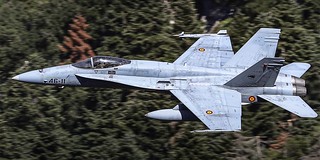Spain deploys an important Aeronaval Group after the passage of a Russian frigate
The first quarter of 2023 will witness a significant deployment of ships and aircraft of the Spanish Navy in the waters of the Mediterranean Sea.
The deployment of the Aeronaval Amphibious Group 'Dédalo 23' in the Mediterranean
This deployment, which is called "Dédalo 23", is carried out within the framework of NATO "in order to increase its training and to show Spain's firm commitment to the Deterrence and Defense Policy of the Alliance", according to the Spanish Navy has reported. The Group's departure to sea took place on Monday, January 16, and its additional purpose is to prepare the qualification and certification of the deployed Aeronaval Amphibious Group for subsequent incorporation into the NATO Readines Initiative (NRI) in 2024.

This Aeronaval Amphibious Group is under the command of the Commander of the Amphibious Group and Fleet Projection, Rear Admiral Gonzalo Villar Rodríguez (Madrid, 1965), and is articulated around the aircraft carrier "Juan Carlos I" L-61, an embarked air unit made up of EAV-8B+ Harrier II Plus fighters from the 9th Squadron and helicopters, as well as a Reinforced Landing Battalion from the Tercio de Armada and a frigate.

The Navy has informed that it is expected that the Amphibious Assault Ships (BAA) "Galicia" L-51 and "Castilla" L-52, the Combat Supply Ship (BAC) "Cantabria" A-15, the "Tramontana" S-74 submarine and a detachment of helicopters from the Spanish Army Air Mobile Forces (FAMET) will join the Group as the deployment progresses. The Spanish Navy has announced that the amphibious ships L-51 and L-52 were scheduled to go to sea next to the L-61 this Monday.

"The deployment will include activities off the coast of Italy and France in its first Phase, of Egypt in its second, to return to the Italian coast in phases III and IV before ending this important deployment at the end of March", the Navy has indicated. "During the period of time that the deployment will last, the Combat Group will interact with other NATO groups and units, which will multiply the training opportunities of the endowments and the General Staff of the Group". This will be the third time since May 2022 that the Amphibious and Projection Group of the Fleet and its flagship, the "Juan Carlos I", carry out a deployment of this type.

The passage of a Russian frigate near Spanish waters last Friday
This deployment, which was already scheduled, began three days after the monitoring of the Russian frigate Admiral Gorshkov, equipped with Zirkon hypersonic missiles, as reported by Infodefensa. The Spanish Defense Staff has indicated that on Friday the 13th the Russian ship was intercepted 20 nautical miles north of the Spanish Exclusive Economic Zone (ZEE) and monitoring began by the Patrol Ship "Serviola" P-71. The Russian ship was sailing south after leaving the English Channel behind. Until reaching the vicinity of Spanish waters, the Russian ship was followed by the French frigate D-656 "Bretagne" and, previously, by ships from the various countries through whose waters she had navigated since she left Russian waters.

On Friday, the "Méndez Núñez" F-104 frigate, which had set sail from the Ferrol Arsenal on Thursday afternoon, took over from the "Serviola" to continue monitoring the ship Russian to Portuguese waters. The monitoring was transferred on Saturday to the Portuguese authorities. A CN-235 maritime surveillance plane from the Air Force also participated in the follow-up operation, locating and monitoring the Russian ship.
---
Photos: Armada Española / Estado Mayor de la Defensa.
|
Don't miss the news and content that interest you. Receive the free daily newsletter in your email: |
- Most read
- Argentina buys 24 F-16s and we can now see how they will be armed and decorated
- A spectacular video of an Alpha Scramble with Eurofighter aircraft from Spain and Germany
- Eurofighter vs F-35: the opinions of professional pilots on these advanced fighters
- The flight between mountains of Spanish EF-18 fighters in the 'Mach Loop' of Greece
- Sierra Army Depot, a huge United States base with hundreds of Abrams tanks stored
- The firearms used by the Pontifical Swiss Guard, the smallest army in the world
- 'Deux Vies': an excellent German short film about the World War I

 ES
ES







Opina sobre esta entrada: